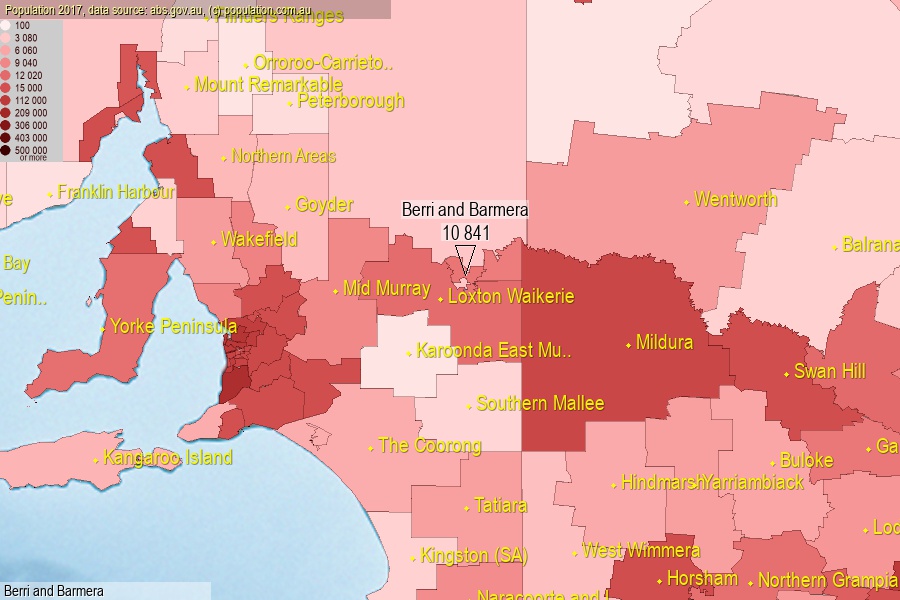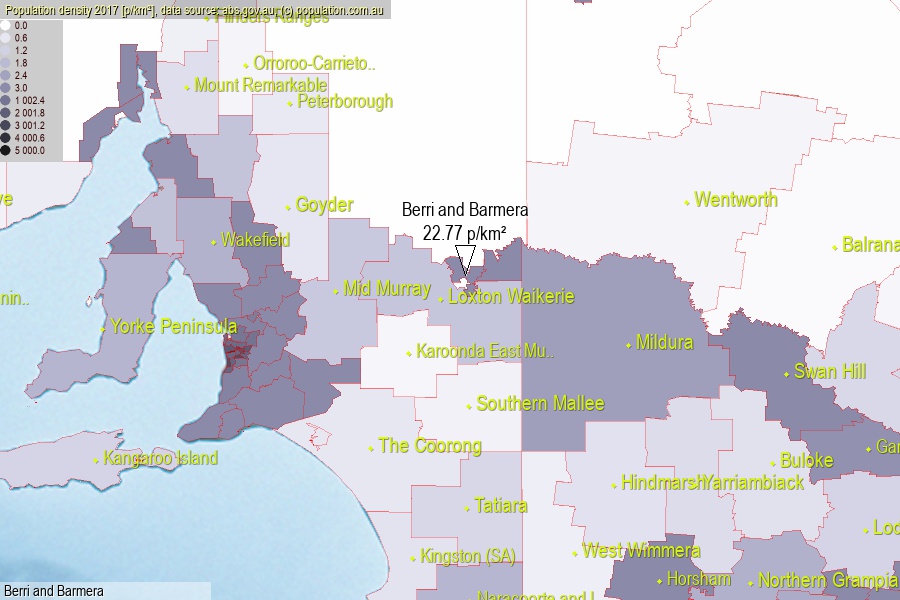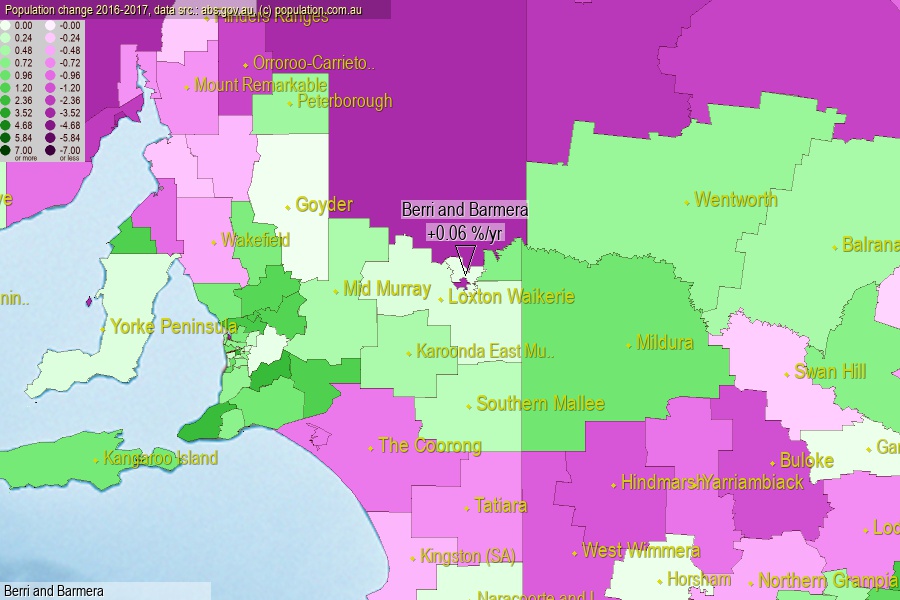 population.com.au
population.com.auLast official estimated population of Berri and Barmera District Council (as Local Government Area) was 10 841 people (on 2017-06-30)[2]. This was 0.04% of total Australian population and 0.625% of SA population. Area of Berri and Barmera is 476.20 km², in this year population density was 22.77 p/km² . If population growth rate would be same as in period 2016-2017 (+0.06%/yr), Berri and Barmera population in 2025 would be 10 889. [0]



Click to enlarge. Berri and Barmera is located in the center of the images.
Population [people], population density [p./km²] and population change [%/year] [2]
[1996-2001] -0.15 %/Y
[2001-2002] -0.26 %/Y
[2002-2003] -0.16 %/Y
[2003-2004] -0.26 %/Y
[2004-2005] -0.06 %/Y
[2005-2006] +0.44 %/Y
[2006-2007] -0.57 %/Y
[2007-2008] -1.31 %/Y
[2008-2009] -1.15 %/Y
[2009-2010] -0.76 %/Y
[2010-2011] -0.79 %/Y
[2011-2012] +0.43 %/Y
[2012-2013] +0.23 %/Y
[2013-2014] +0.40 %/Y
[2014-2015] +0.06 %/Y
[2015-2016] -0.18 %/Y
[2016-2017] +0.06 %/Y
[0] Calculated with linear interpolation from officially estimated population
[1] Read more about LGA and Australian Statistical Geography Standard (ASGS) on abs.gov.au
[2] Population data from Australian Bureau of Statistics (Population and density: 2017; change: 2016-2017)
[3] Digital Boundaries: Australian Statistical Geography Standard (ASGS) 2016.